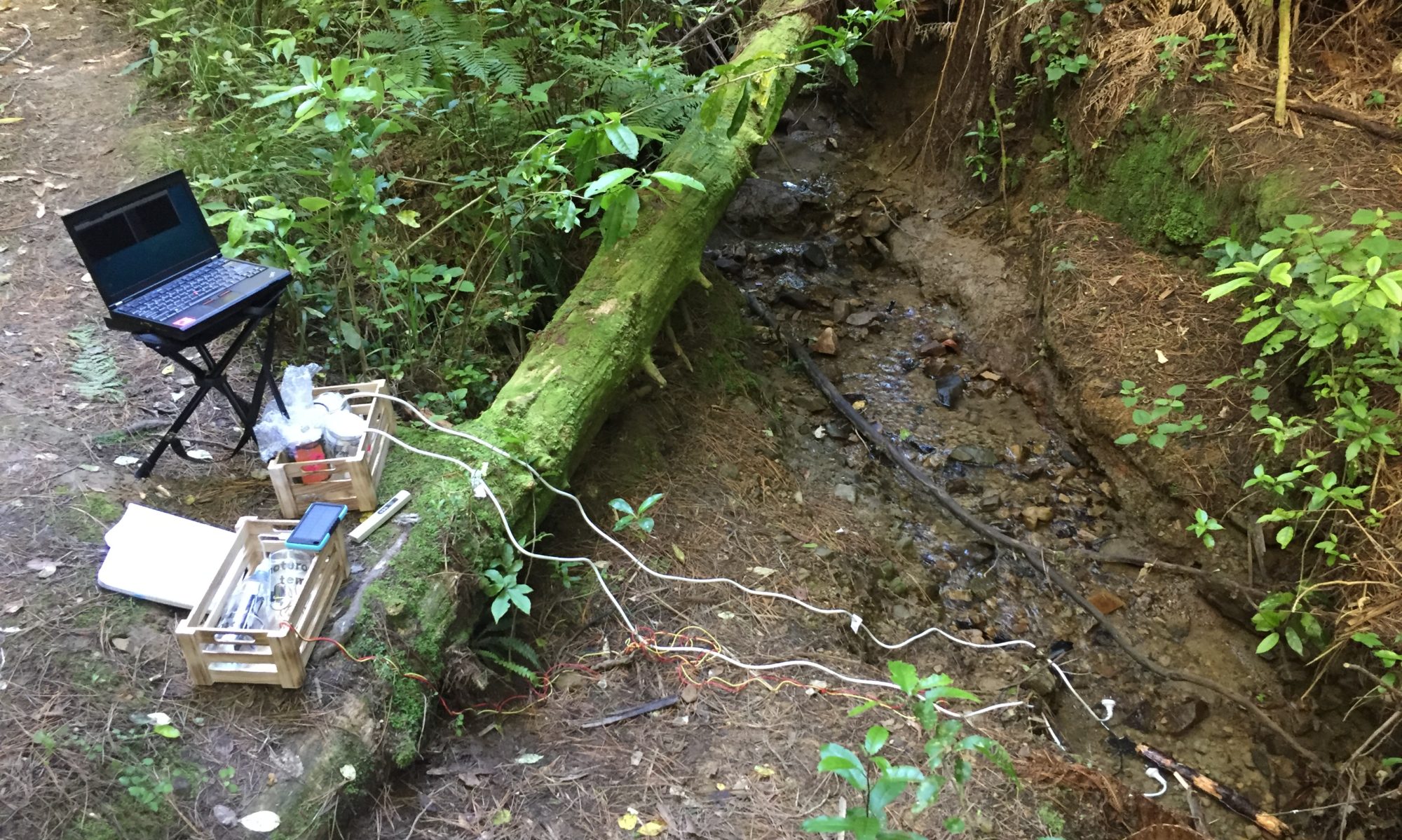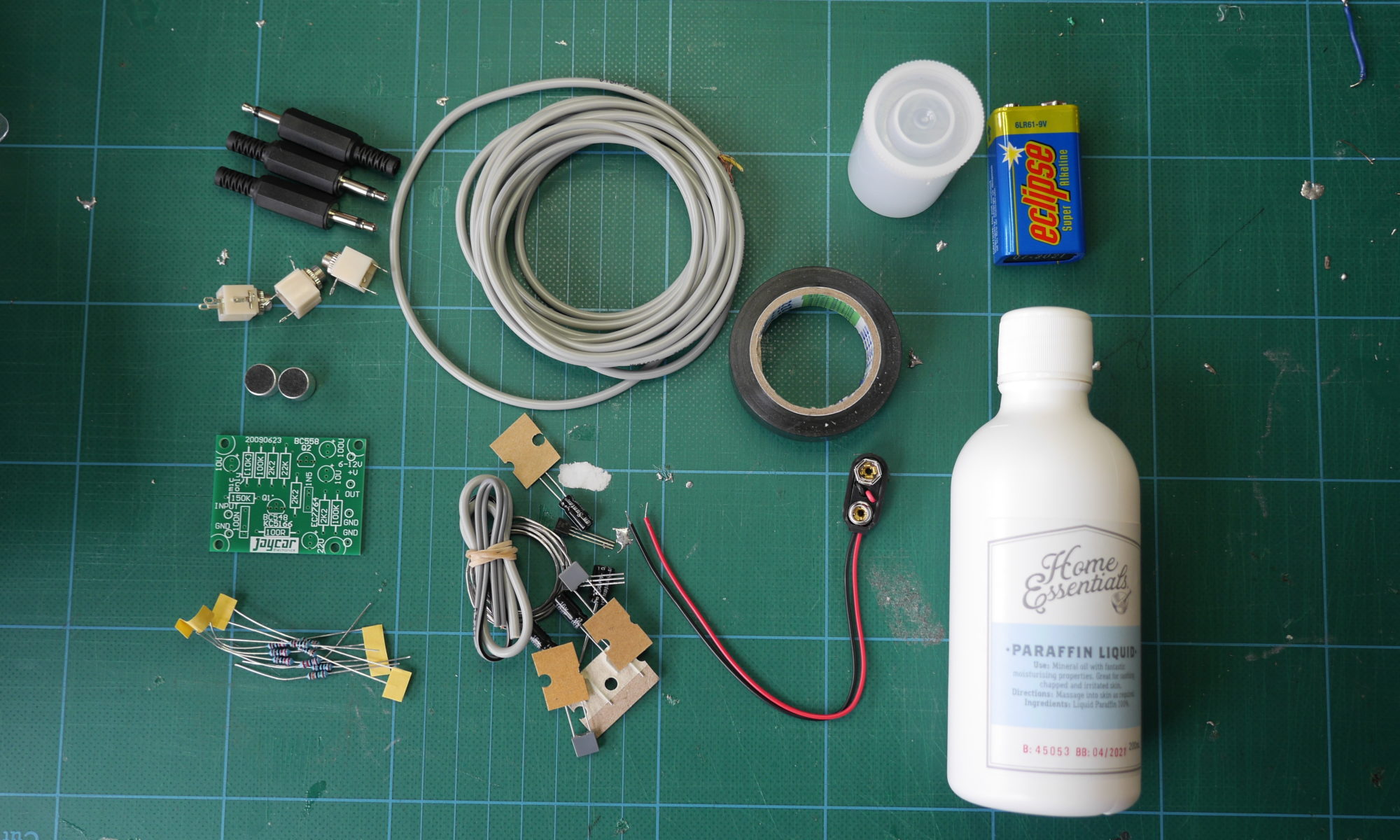For this research I want to explore what kind of DIY electronics can amplify the voice of the forgotten streams in Poneke/Wellington, New Zealand. As a first device I want to build a hydrophone that can be used during fieldwork to record underwater sounds.
Hydrophones used in scientific research, for acoustic monitoring, such as for tracking marine animals, are relatively expensive and even DIY solutions feature costly elements (see for example Dawson, 2012). In low-cost DIY solutions old audio components, such as headphones or radios are re-used (e.g. digifishmusic, 2008) and made waterproof with silicone or hot glue.
I decided to combine building a hydrophone based on two instructions. Both are based on using an electret microphone element as the primary component. In the instructions of Decker (2013) the element is enclosed in an empty film canister filled with mineral oil as a medium to optimize the hyrdophone. I chose this design for the first version following a suggestion on the Wellington Sonic Arts Facebook. The instructions by the University of Waikato (2011) feature a component list that is available in New Zealand.
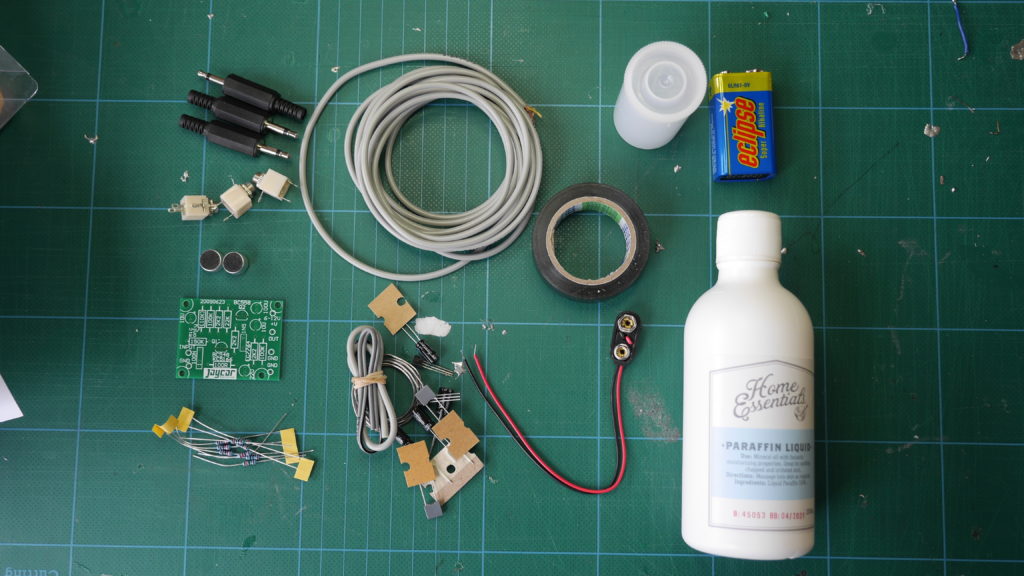
Building the first version of the hydrophone took less than a day and involved researching the best possible option to be done within one day, sketching a schematic alongside a shopping list of necessary parts, planning the quickest route around town to buy all necessary parts and then 2 hours of soldering and assembling plus some extra time for testing and troubleshooting and documenting along the way.
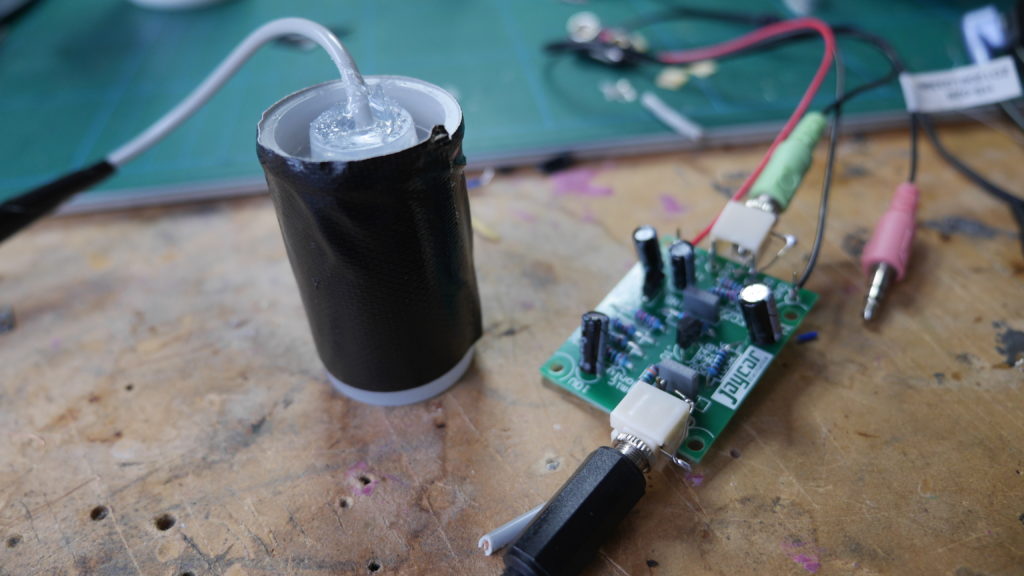
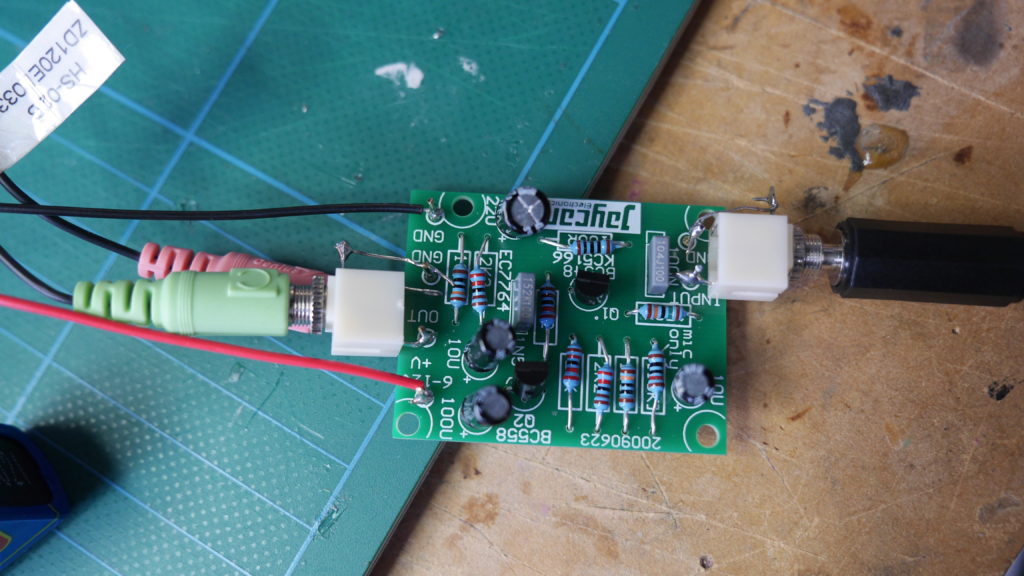
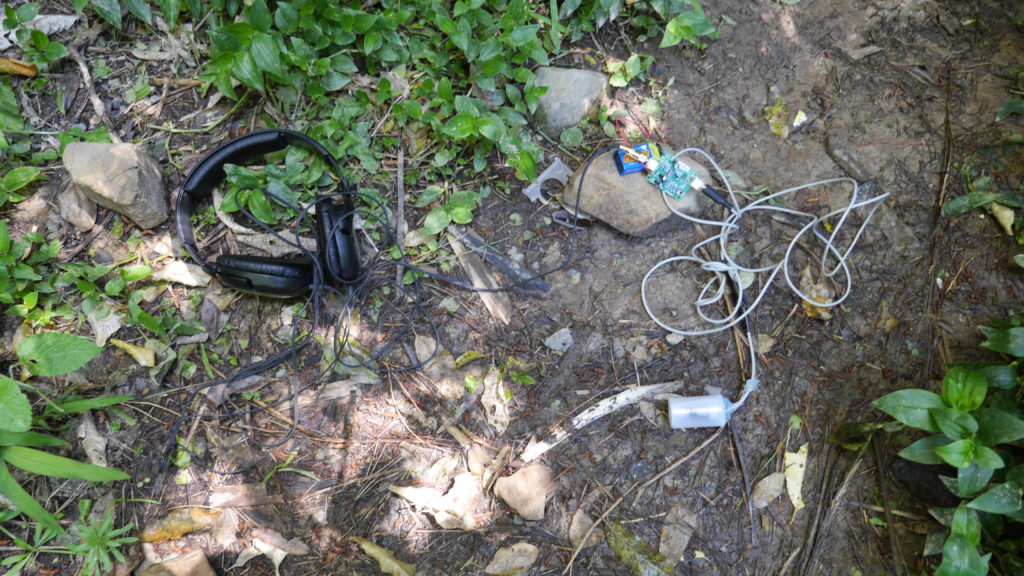
I built the hydrophone as described in Decker (2013) but used a 3.5mm mono headphone jack at the end of the 3 meter long cable. I also soldered 3.5mm sockets to the pre-amp for in- and outputs to keep the device as modular as possible. For testing the hyrdrophone I used a pair of headphones, but I will be looking into options for adding a speaker. Currently, the pre-amp turns on and off by connecting and deconnecting the battery, which is cumbersome, so adding a switch would be a good improvement overall to be added to a (preferably waterproof) enclosure.
Dawson, S. (2012, January 20). Building the “CETOS” directional hydrophone. Retrieved from http://whaledolphintrust.org.nz/wp-content/uploads/Building-Directional-HPs.pdf
Decker, F. C. (2013, June). Underwater sound detection using sea perch through construction and operation of hydrophone. Retrieved from https://seaperch.byu.edu/wp-content/uploads/2013/06/Final.pdf
digifishmusic. (2008, January). How to make a Hydrophone (stereo!). freesound. Retrieved from http://www.freesound.org/forum/production-techniques-music-gear-tips-and-tricks/2631/?page=1#post13253
The University of Waikato, New Zealand. (2011, May 10). Make and Use a Hydrophone. Retrieved October 17, 2016, from http://sciencelearn.org.nz/content/download/20964/411858/version/7/file/Make+and+use+a+hydrophone.doc
